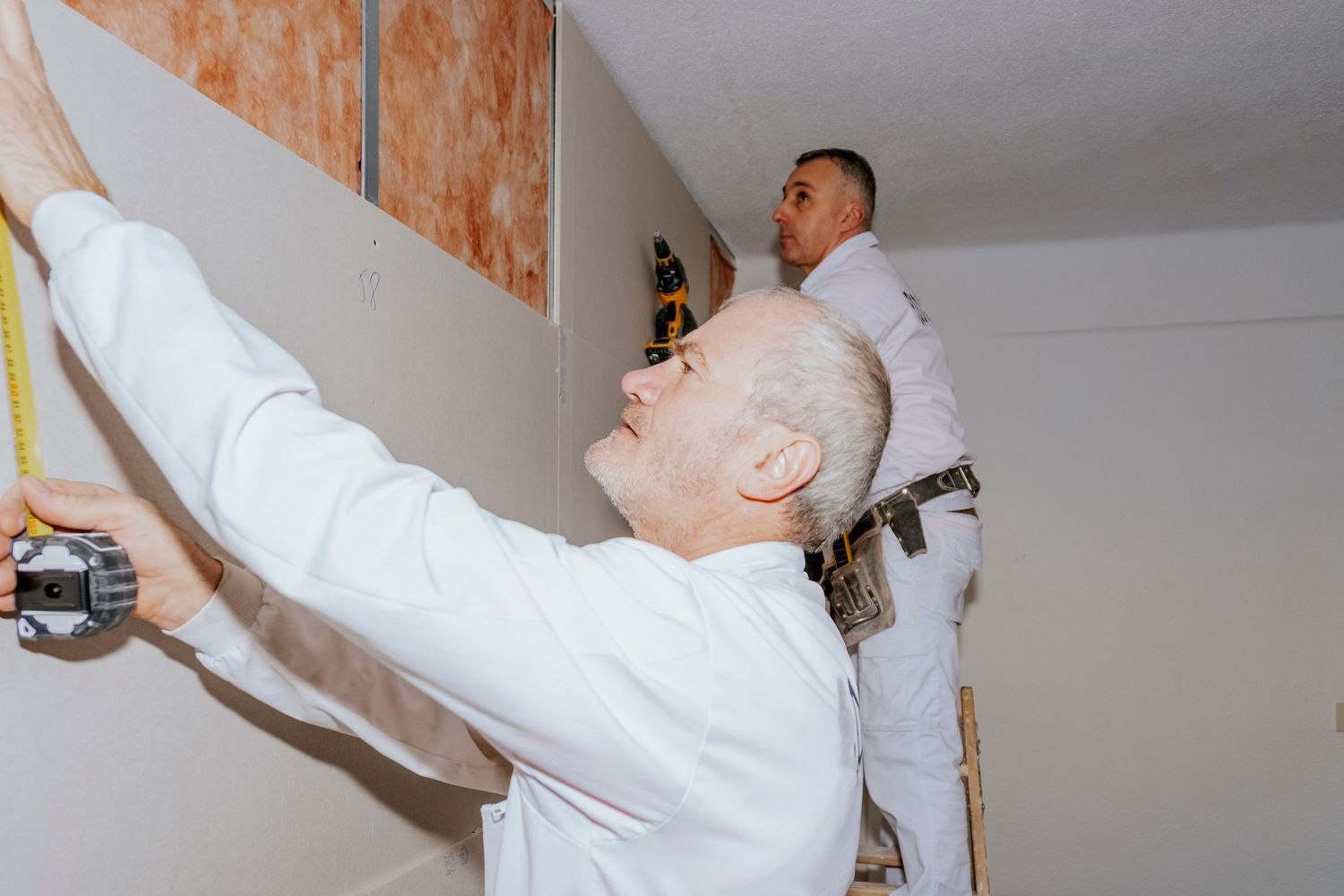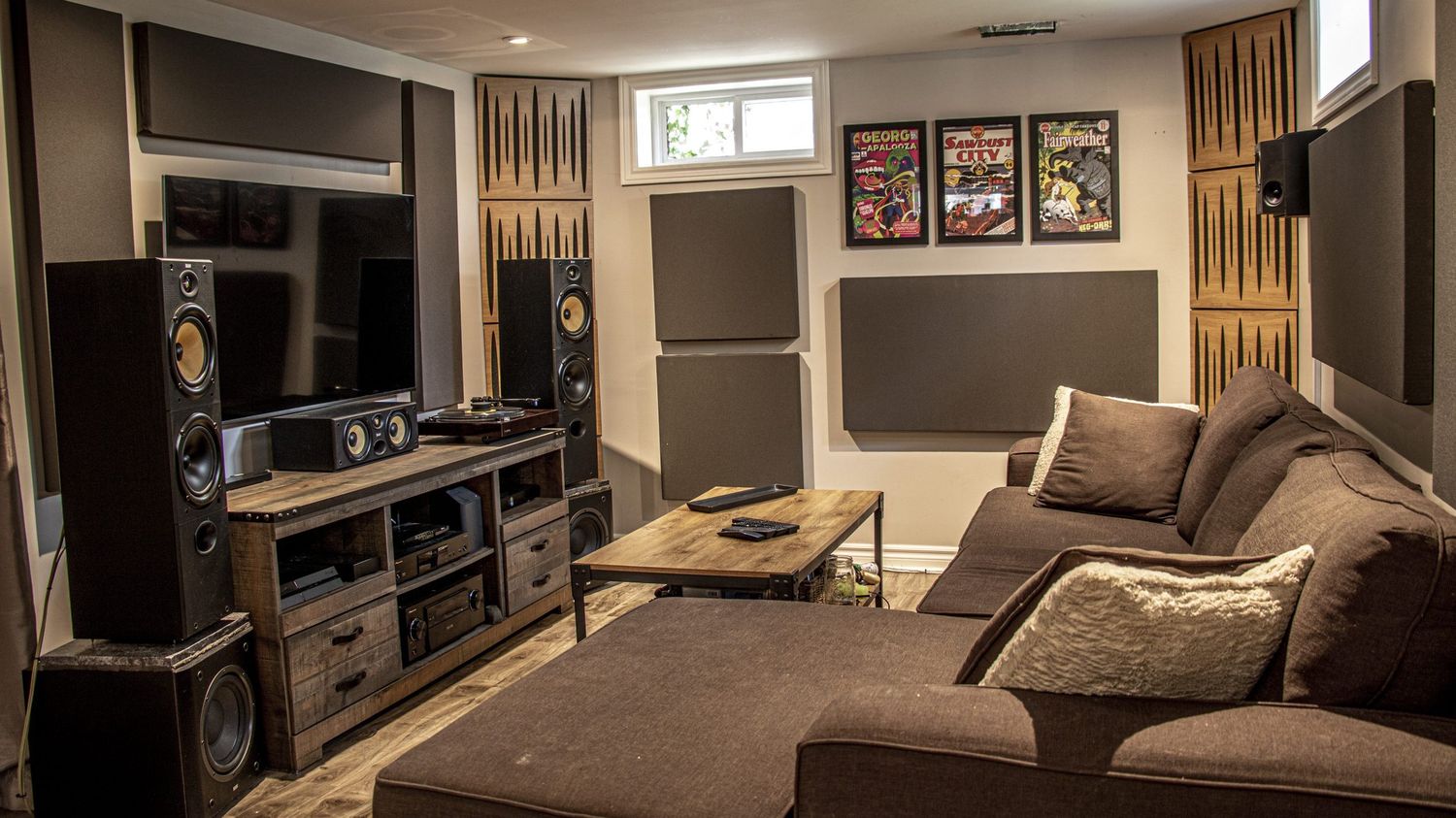Home>Production & Technology>Soundproofing>How Much Sound Does Soundproofing Dampen


Soundproofing
How Much Sound Does Soundproofing Dampen
Published: January 26, 2024
Discover how much sound can be dampened through effective soundproofing techniques in this comprehensive guide. Learn how to minimize noise disturbances with soundproofing solutions.
(Many of the links in this article redirect to a specific reviewed product. Your purchase of these products through affiliate links helps to generate commission for AudioLover.com, at no extra cost. Learn more)
Table of Contents
Introduction
When it comes to creating a peaceful and quiet environment, soundproofing is the key. Whether you’re trying to block out external noise or prevent sound from escaping a room, soundproofing can significantly reduce the amount of sound that enters or leaves a space. But how much sound does soundproofing actually dampen?
Soundproofing is the process of reducing or eliminating sound transmission through the use of various materials and techniques. It is commonly used in buildings, homes, studios, and other spaces where noise control is desired. Understanding the effectiveness of soundproofing is crucial in order to make informed decisions about the materials and techniques to be used.
In this article, we will delve into the world of soundproofing and explore the factors that affect its efficiency. We will also discuss how to evaluate the dampening effects of soundproofing and the various materials and techniques available for soundproofing applications.
Whether you’re a homeowner looking to create a quiet oasis in a noisy neighborhood, a musician aiming to prevent sound leakage from a recording studio, or a business owner wanting to maintain privacy in your conference rooms, understanding the level of sound dampening achieved through soundproofing is essential.
Join us as we uncover the mysteries of soundproofing and how it can transform your space into a tranquil haven, free from the disturbances of the outside world.
Understanding Soundproofing
In order to understand how much sound soundproofing can dampen, it’s important to have a basic understanding of how sound travels and how soundproofing works.
Sound is a form of energy that travels in waves, vibrating particles in the air or other mediums. When sound waves encounter a barrier, such as a wall or a door, they can either pass through, reflect off the surface, or be absorbed by it.
Soundproofing works by using materials and techniques that prevent sound waves from easily passing through or being transmitted from one space to another. The goal is to minimize the amount of sound that can enter or leave a room, effectively creating a barrier that helps to create a quieter environment.
There are two main types of soundproofing: airborne soundproofing and impact soundproofing.
Airborne soundproofing focuses on reducing or blocking sound waves that travel through the air. This type of soundproofing is effective for blocking sounds such as voices, music, or traffic noise. It often involves adding mass and density to walls, floors, and ceilings, using materials like mass-loaded vinyl, acoustic panels, or insulation.
Impact soundproofing, on the other hand, is designed to reduce the transmission of vibrations caused by physical impact. This type of soundproofing is effective for blocking sounds like footsteps, slamming doors, or furniture moving. It typically involves damping or isolating the structure to minimize vibrations that can travel through solid materials.
By understanding the different types of soundproofing and the principles behind them, you can determine the most effective approach for your specific sound control needs.
Now that we have a solid foundation in soundproofing, let’s dive deeper into the factors that affect the efficiency of soundproofing and how to evaluate its dampening effects.
Factors Affecting Soundproofing Efficiency
Several factors influence the effectiveness of soundproofing and the degree to which it can dampen sound. Understanding these factors will help you make informed decisions when selecting soundproofing materials and techniques. Here are some key factors to consider:
1. Mass and Density:
The mass and density of a material play a vital role in soundproofing. Heavier and denser materials are more effective at blocking sound waves as they absorb and reduce their energy. Materials like concrete, gypsum board, and mass-loaded vinyl are commonly used due to their high mass and density, making them effective in reducing airborne sound transmission.
2. Sealing and Air Leakage:
Air leakage can significantly diminish the effectiveness of soundproofing. Even if you have soundproof materials, sound can still find its way through gaps, cracks, and openings. Proper sealing of doors, windows, and any gaps in walls or floors is crucial to ensure maximum soundproofing efficiency.
3. Layers and Construction:
The number of layers and construction of a soundproof barrier also impact its effectiveness. Adding multiple layers of soundproofing materials, with each layer having a different resonance frequency, can create an effective barrier against sound transmission. Additionally, using techniques such as decoupling, where materials are not directly connected, can further enhance soundproofing efficiency.
4. Absorption:
Sound absorption refers to the ability of materials to absorb sound waves rather than reflect them. Materials with high absorption properties, such as acoustic foam or fiberglass panels, can reduce sound reflections and improve soundproofing efficiency.
5. Location and Placement:
The placement of soundproofing materials is crucial to maximize their effectiveness. Identifying the most critical areas where sound enters or escapes a room and strategically installing soundproofing materials in those locations can yield the best results.
6. Frequency Range:
Soundproofing materials may have varying levels of effectiveness across different frequencies. Some materials may excel at blocking high-frequency sounds like voices, while others may be more effective at reducing low-frequency sounds like bass. Understanding the frequency range you’re trying to block or reduce can help you select the most suitable materials for your specific soundproofing needs.
It’s important to note that the combination of these factors and their interactions will ultimately determine how much sound can be dampened through soundproofing. Therefore, it’s recommended to consult professionals or conduct thorough research to ensure the most effective soundproofing solutions for your specific requirements.
Now that we have explored the factors that impact soundproofing efficiency, let’s move on to understanding how to evaluate the dampening effects of soundproofing materials and techniques.
Evaluating Soundproofing Dampening Effects
When it comes to assessing the effectiveness of soundproofing and the level of sound dampening achieved, there are a few key methods and measurements that can be used. Here are the primary ways to evaluate soundproofing dampening effects:
1. Sound Transmission Class (STC):
The Sound Transmission Class (STC) rating is a widely used method to measure the soundproofing capability of materials or assemblies. It rates the ability of a material or assembly to reduce airborne sound transmission at different frequencies. The higher the STC rating, the better the soundproofing performance. For example, a room with an STC rating of 50 will block more sound compared to a room with an STC rating of 30.
2. Impact Insulation Class (IIC):
The Impact Insulation Class (IIC) rating measures the soundproofing effectiveness in reducing impact noise, such as footsteps or furniture movement, between floors. It evaluates the level of sound transmitted through the floor by simulating impact noise in a laboratory setting. A higher IIC rating indicates better soundproofing against impact noise.
3. Noise Reduction Coefficient (NRC):
The Noise Reduction Coefficient (NRC) is a measurement used to assess the sound absorption capabilities of materials. It quantifies the average amount of sound energy absorbed by a material across different frequencies. A higher NRC rating indicates better sound absorption, reducing sound reflections and improving overall soundproofing performance.
4. Field Testing:
In some cases, conducting field testing can provide more accurate and specific results for evaluating soundproofing effectiveness. This involves measuring sound levels before and after implementing soundproofing measures to determine the degree of sound reduction achieved in real-world conditions. Field testing can capture unique factors and variables that may impact sound transmission in a particular space.
5. Subjective Evaluation:
While objective measurements provide valuable data, it’s also important to consider subjective evaluation. This involves experiencing the soundproofed space and determining whether the desired level of sound reduction and noise control has been achieved. Personal perception and satisfaction also play a significant role in evaluating the effectiveness of soundproofing solutions.
It’s important to note that these evaluation methods are not exclusive, and the combination of multiple techniques can provide a more comprehensive understanding of soundproofing performance.
By utilizing these evaluation methods and measurements, you can better assess the level of sound dampening achieved through soundproofing materials and techniques. This knowledge will help you make informed decisions when selecting the most suitable soundproofing solutions for your specific needs.
Now that we have discussed how to evaluate soundproofing dampening effects, let’s explore the various materials and techniques available for soundproofing applications.
Soundproofing Materials and Techniques
When it comes to soundproofing, there are various materials and techniques available to help dampen sound and create a quieter environment. The choice of soundproofing materials and techniques will depend on the specific application and the level of sound reduction desired. Here are some commonly used materials and techniques:
1. Mass-Loaded Vinyl (MLV):
Mass-loaded vinyl is a dense, flexible material that is commonly used for soundproofing walls, ceilings, and floors. It is made from a combination of minerals and polymers, providing excellent sound dampening properties. MLV is easy to install, and its high mass helps to block airborne sound transmission.
2. Acoustic Panels:
Acoustic panels are designed to absorb sound and reduce reflections in a space. They are typically made from materials like fiberglass or foam, and their unique structure helps to dissipate sound energy. Acoustic panels are commonly used in recording studios, home theaters, and offices to improve sound quality and reduce reverberation.
3. Soundproof Curtains:
Soundproof curtains, also known as acoustic curtains or drapes, are made from dense materials designed to block sound waves. They are particularly useful for reducing outside noise, such as traffic or street noise, from entering a room. Soundproof curtains are easy to install and can be an effective temporary solution for soundproofing needs.
4. Green Glue:
Green Glue is a specially formulated damping compound that is used to enhance the soundproofing performance between layers of drywall or other building materials. It converts sound energy into heat, reducing sound transmission through walls, ceilings, and floors. Green Glue is simple to apply, making it a popular choice in soundproofing construction projects.
5. Door and Window Seals:
Gaps around doors and windows can be significant sources of sound leakage. Applying weatherstripping or sealing strips can help create an airtight seal, blocking sound from entering or escaping a room. Additionally, installing double-glazed windows in noisy areas can improve soundproofing efficiency.
6. Decoupling:
Decoupling is a technique that involves creating isolation between building elements, such as walls and floors, to reduce the transmission of vibrations and impact noise. This is typically achieved by using resilient channels, mass-spring systems, or acoustic hangers to disconnect surfaces and prevent the transfer of sound energy.
These are just a few examples of the many soundproofing materials and techniques available. It’s important to assess your specific needs and consult with professionals to determine the most suitable options for your soundproofing projects.
Now that we have explored different materials and techniques, let’s conclude our discussion on soundproofing and its impact on reducing sound transmission.
Conclusion
Soundproofing is a valuable solution for reducing noise transmission and creating a peaceful environment. While it is impossible to completely eliminate all sound, soundproofing materials and techniques can significantly dampen sound and improve overall acoustic control.
Understanding the factors that affect soundproofing efficiency, such as mass and density, sealing and air leakage, layers and construction, absorption, location and placement, and frequency range, is essential in making informed decisions about soundproofing solutions.
Evaluating the dampening effects of soundproofing can be done through objective measurements like Sound Transmission Class (STC), Impact Insulation Class (IIC), and Noise Reduction Coefficient (NRC). Additionally, field testing and subjective evaluation play significant roles in assessing soundproofing effectiveness.
Various soundproofing materials and techniques are available, including mass-loaded vinyl, acoustic panels, soundproof curtains, Green Glue, door and window seals, and decoupling methods. Selecting the appropriate materials and techniques for specific applications is crucial to achieving the desired sound reduction goals.
Whether you want to create a quiet home environment, improve sound quality in a commercial space, or create a professional recording studio, soundproofing can greatly enhance your acoustic experience.
By utilizing the knowledge and understanding gained from this article, you can take steps towards creating a tranquil oasis—free from the disturbances of the outside world. So, embrace the power of soundproofing and transform your space into a serene sanctuary.











